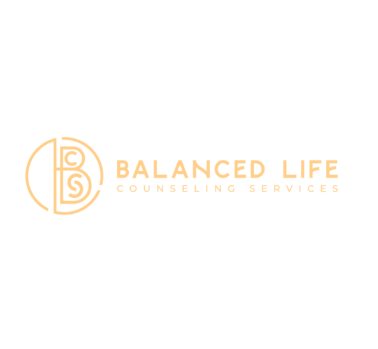WHY THERAPY

A Need for Balance
Clients often feel controlled by their emotions, struggling to think clearly, and simply reacting to their environment, rather than directing their own life path. This can leave them feeling disoriented, as though walking through a fog.

Our Work
We will explore the pieces of your life that brought you where you are today and may have left you feeling on unstable ground. We'll decide together which areas of your life create the most difficulty and explore ways to reshape them.

Moving Forward
The goal is to provide you with the tools you need to live a more positive and balanced life.
Approach
At our first meeting, I tell clients that "my goal is to put myself out of business with everyone that I work with". That usually brings a smile, but I believe therapy is a means to help clients move forward on their own with confidence. We'll talk about your goals and how we will know when we've reached them.
My approach is that we are a team. I have training and knowledge to guide this journey, but you are the one who leads the way.
Every client brings his or her own unique needs. We will tailor your treatment to fit yours.
We will work together to identify your strengths and how they can help you achieve your goals.
You will learn practical techniques to feel more balanced in your life.
We will build awareness of what your body is already telling you and how to harness those signals to make positive changes.
If trauma has been part of your history, we can explore its impact on you today and discover ways to accelerate your healing journey.
You will be treated with respect no matter your religious beliefs, sexual identification, gender, age, ethnicity, and/or cultural background.

Different Areas of Potential Treatment Focus:
Anxiety Depression
Trauma Grief
Chronic Pain Phobias
Self-Esteem Life Transitions
Stress Coping Skills
Sleep and Insomnia Life Coaching
Suicidal Thoughts Sexual Abuse Relationship Issues Military Trauma
Domestic Violence Family Issues
Anger Management Work Stress
Performance Anxiety Social Anxiety
Emotional Disturbance Communication Skills
About Me
I am a Licensed Clinical Social Worker (LCSW) and have been in the profession for over 26 years and use various therapy techniques depending on our discussions and your desired goals.
Therapeutic approaches:
“EMDR is psychotherapy that enables people to heal from the symptoms and emotional distress that are the result of disturbing life experiences.” – emdr.com
You can think of like when “a foreign object or repeated injury irritates the wound, it festers and causes pain. Once the block is removed, healing resumes. EMDR therapy demonstrates that a similar sequence of events occurs with mental processes. The brain’s information processing system naturally moves toward mental health. If the system is blocked or imbalanced by the impact of a disturbing event, the emotional wound festers and can cause intense suffering. Once the block is removed, healing resumes.” – emdr.com
Cognitive Processing Therapy is an evidenced-based therapy shown by research to be successful in treating trauma and is similar to CBT. This approach focuses on how beliefs are developed from traumatic experiences and how they negatively impact us today. These feelings can include not feeling safe, lacking trust, reduced sense of power, feeling little to no control, low self-esteem or esteem for others, and not feeling comfortable with intimacy (which can also include difficulty feeling emotionally close to someone). This therapy has a specific and ordered series of session topics and exercises that build upon the other. By the end, the negative beliefs are altered so the client can move forward with a healthier understanding of trauma and experience positive changes in their life.
Another evidenced-based trauma therapy, this approach moves slowly and at the client’s pace. It also has a specific and ordered series of session topics, including exercises that build upon each other. Prolonged Exposure Therapy focuses on the brain and body’s reactions when the trauma occurred and how they continue re-occurring as if the trauma were happening today. According to the US Department of Veterans Affairs, “People with PTSD often try to avoid anything that reminds them of the trauma. This can help you feel better in the moment, but not in the long term. Avoiding these feelings and situations actually keeps you from recovering from PTSD. PE works by helping you face your fears.” This approach gradually leans into the uncomfortable feelings that arise when recalling traumatic experiences and retrains your brain and body to calm their reactions through repeated practice. By the end of therapy, the goal is to recognize that you are not in danger today and do not have to avoid or fear the memories.
A processing approach that targets thinking patterns and how they negatively impact your life. It is one of the most commonly used therapies because of its versatility with various diagnoses. The techniques target unhelpful thoughts, the related emotions, and reactions to them. Through exercises and worksheets, you begin to change the negative thinking patterns into more positive, adaptive thoughts. According to APA.org, “Numerous research studies suggest that CBT leads to significant improvement in functioning and quality of life.”
This approach tends to involve shorter-term treatment because the focus is on the present and future. Any discussion about the past is brief. SFT is a more analytical approach where you identify clear and measurable goals for yourself, assess your strengths and how to use them, experiment with different potential solutions, and develop a plan to move forward. Psychology Today described this therapy approach as having the “. . .assumption that people have the strength, wisdom, experience, and resilience to effect change.”
Similar to CBT but uses more practical techniques to manage high emotional distress. The thoughts linked to such distress are often described as feeling like being stuck in a looping cycle and being controlled by emotions.
As described by the Cleveland Clinic, DBT focuses on use of:
- “Mindfulness: This is the practice of being fully aware and focused in the present instead of worrying about the past or future.
- Distress tolerance: This involves understanding and managing your emotions in difficult or stressful situations without responding with harmful behaviors.
- Interpersonal effectiveness: This means understanding how to ask for what you want and need and setting boundaries while maintaining respect for yourself and others.
- Emotion regulation: This means understanding, being more aware of and having more control over your emotions.”
-
Ann Padgett, LCSW
-
+1 317-742-9771
-
Email Me: ann.padgett@balancedlifecsllc.com
-
Address:
6375 W. US Hwy. 52, Suite 202,
New Palestine, IN 46163
- Mon: 9AM - 5PM
- Tues: 9AM - 5PM
- Wed: 9AM - 5PM
- Thur: 9AM - 5PM
- Fri: 9AM - 5PM
- In-person and virtual appointments offered
Contact Me
Thank you for your interest in my services. Please fill out the form below, and I will get back to you as soon as possible. Have a great day!
Payment Options:
- Self-pay
- Anthem
- Blue Cross/Blue Shield
- CareSource
- Cigna
- Aetna
